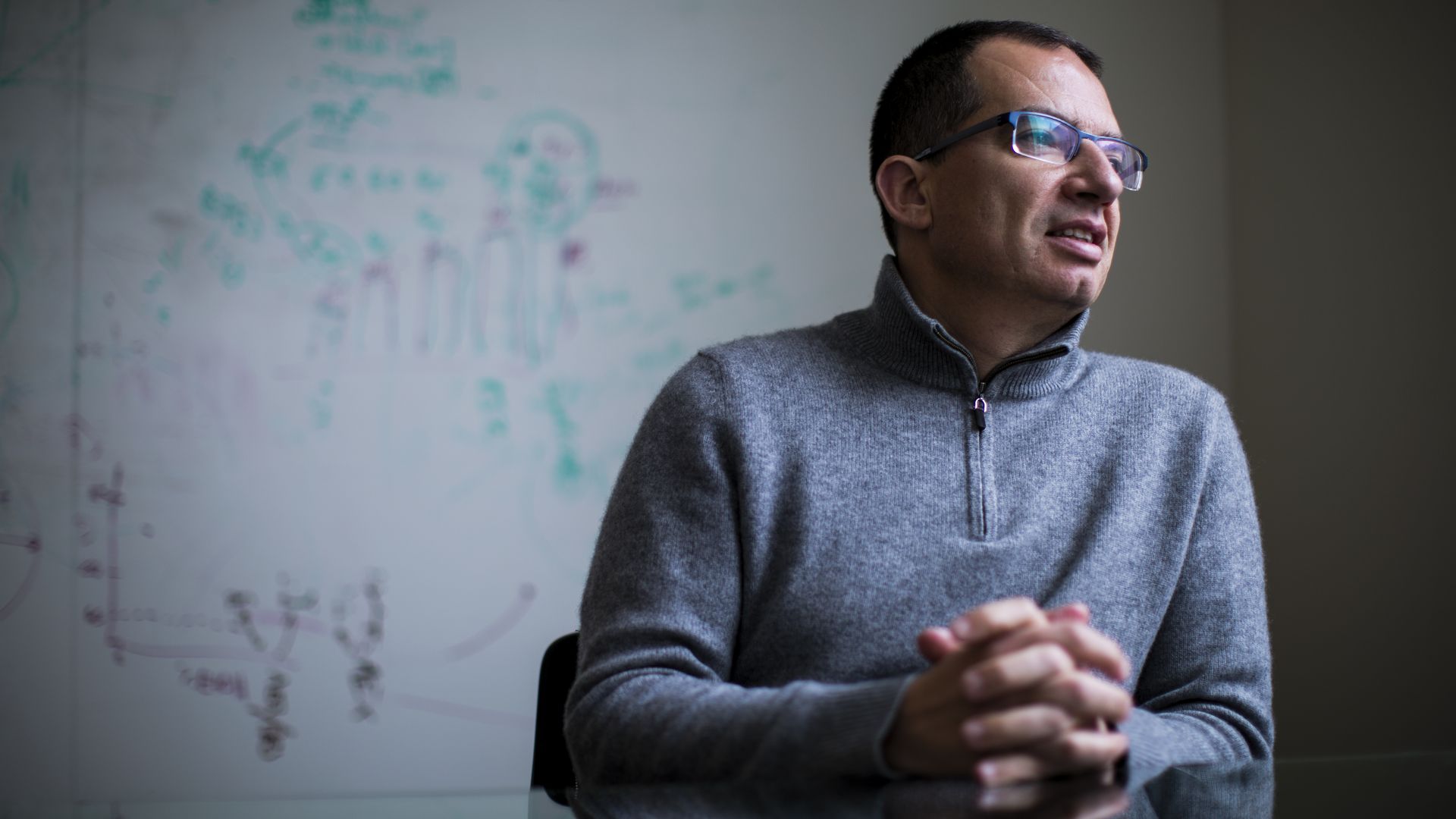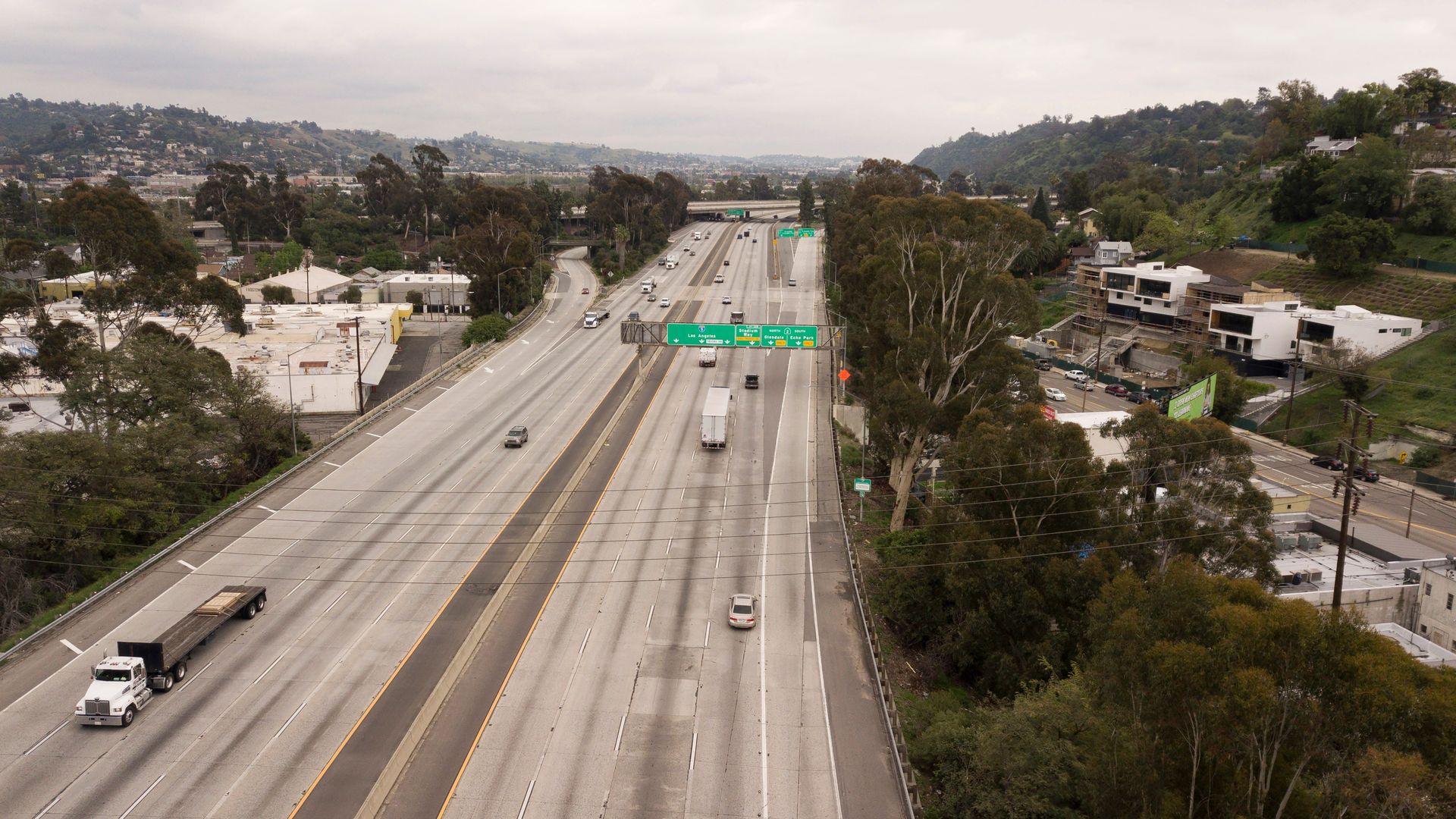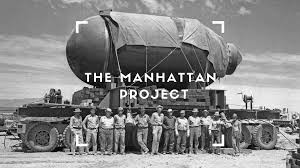| | | | | | | Presented By Hewlett Packard Enterprise | | | | Axios Future | | By Bryan Walsh ·Feb 03, 2021 | | Welcome to Axios Future, where we wish Jeff Bezos, who is stepping down as Amazon CEO, the best of luck in what we assume is the new life that awaits him in the Off-world colonies. Today's Smart Brevity count: 1,866 words or about 7 minutes | | | | | | 1 big thing: We're wasting nature's bank account |  | | | Illustration: Sarah Grillo/Axios | | | | A sweeping new review makes the case that nature has a fundamental economic value — and our account is badly overdrawn. Why it matters: The natural capital created by clean water and air, biodiversity, and basic resources has been the foundation of human prosperity, but because it has no clear economic value, we too often treat it as infinite. Securing a sustainable future may require treating nature less like lottery winnings and more like a retirement account. Driving the news: On Tuesday, Cambridge University economist Partha Dasgupta published a major report commissioned by the U.K. government about the underappreciated economics of biodiversity. - In economic terms, Dasgupta notes that while produced capital — assets like factories and roads — doubled between 1992 and 2014, and human capital has increased by about 13%, the stock of natural capital per person declined by nearly 40%.
- The report cites estimates that current extinction rates are 100–1,000 times higher than the planet's baseline rate and that 20% of species could become extinct within the next several decades.
- Those trends are in large part a consequence of how much Earth has become a support system for a single species: human beings.
The impact: "Estimates of our total impact on nature suggest that we would require 1.6 Earths to maintain the world's current living standards," Dasgupta writes. - Last time I checked, we've only got one.
The big picture: The degradation of nature has coincided with revolutionary improvements in the human condition, with the world's final output of goods and services rising more than 13-fold over the past 70 years, to more than $120 trillion in value. - The report views those two facts as connected. From the richest billionaire to a person who has just emerged from absolute poverty, human prosperity depends on being able to draw from the resources nature provides — at least in market terms — for free.
The problem is that while nature's bank account may have plenty of zeros, it's not infinite, and as we draw it down, we undercut humanity's future, like a rich family wasting its descendants' inheritance. - Dasgupta argues we need to look at natural capital as we would other forms of capital, investing it wisely to ensure that future generations enjoy not just natural splendor, but the raw materials an economy depends on.
- To do so, we need to figure out ways to equitably share the planet's natural capital, instituting payments to protect the ecosystems controlled by individual nations and imposing rents for common global resources like the oceans and the atmosphere.
The catch: Any such system would demand a degree of international governance and cooperation — not to mention individual discipline — that appears far beyond what we're currently able to manage. Our thought bubble: One of my underlying assumptions at Future is that technological progress is especially valuable in so far as it can enable us to sidestep our political and even psychological limitations. - I'm doubtful that nearly 200 countries would ever come together to fairly divvy up the world's natural capital, just like I'm doubtful that human beings can be convinced to significantly curb their patterns of consumption.
- What's more likely to save us is the development of technologies that can enable us to get more out of our stock of natural capital — an approach Dasgupta does praise. We only have one Earth, but the ultimate economic value of the planet depends in large part on what human ingenuity can make of it.
The bottom line: As Dasgupta writes, when it comes to nature, "we are all asset managers." |     | | | | | | 2. Making pain measurable |  | | | Illustration: Aïda Amer/Axios | | | | Scientists are working on a way to use AI to create quantitative measurements for chronic pain. Why it matters: Chronic pain is an epidemic in the U.S., but doctors can't measure discomfort as they can other vital signs. Building methods that can objectively measure pain can help ensure that the millions in need of palliative care aren't left to suffer. What's happening: Late last month, scientists from IBM and Boston Scientific presented new research outlining a framework that uses machine learning and activity monitoring devices to capture and analyze biometric data that can correspond to the perception of pain. - The researchers are using biomarkers collected in clinical studies involving patients undergoing spinal cord stimulation, including information on movement collected from smartwatches, sleep data, heart rate levels and even voice recordings.
- AI is being employed to sift through the results in the hopes of identifying patterns that might enable doctors to "read" a patient's pain levels through that more granular data.
What they're saying: "We want to use all the tools of predictive analytics and get to the point where we can predict where people's pain is going to be in the future, with enough time to give doctors the chance to intervene," says Jeff Rogers, senior manager for digital health at IBM Research. Background: According to one estimate, more than 100 million Americans struggle with chronic pain, at an annual cost of as much as $635 billion in painkillers and lost productivity. - Yet doctors' methods for pain measurement remain rudimentary, like asking patients to report their pain on a scale of 1 to 10, or even just pointing to cartoon faces with different emotions.
What's next: Rogers hopes the research can lead to medical devices that could predict chronic pain signals ahead of suffering and adjust their response accordingly. |     | | | | | | 3. Moderna CEO on building a tech-obsessed drug company |  | | | Moderna CEO Stéphane Bancel. Photo: Adam Glanzman/Bloomberg via Getty Images | | | | Moderna's CEO tells Axios the company's coronavirus vaccine made it to market in near-record time thanks in part to a unique digital foundation. The big picture: Moderna is far smaller than many of its pharma competitors, but it made one of the first authorized COVID-19 vaccines. But the company still needs to adapt to a mutating virus — and come up with its next blockbuster product. What they're saying: While Moderna's SARS-CoV-2 vaccine is already beginning to make a dent in the pandemic, the shifting virus still poses a major challenge to the company and all of humanity, Moderna CEO Stéphane Bancel tells Axios in an interview. - "I think the world does not understand what's coming ahead of us," says Bancel. "I don't think we're out of the woods at all on this pandemic."
Background: That Moderna — which is barely more than a decade old and is far smaller than most of its competitors — was able to bring its vaccine to market in less than a year is a testament to the flexibility of its mRNA platform and its early embrace of digital technology and machine learning. - At bigger companies where Bancel worked in the past, "I'd spend days trying to figure out what was the truth, because you'd have different data for the same thing," he says.
- "We try to be a company where all the data flows and where there's only one system, one truth."
What's next: The emergence of coronavirus variants that may render vaccines less effective has Moderna preparing booster shots — something that's easier to do with the mRNA platform. - The COVID-19 vaccines made by Moderna and other companies could become a recurring product, just as the seasonal flu shot is now.
What to watch: How quickly Moderna can continue to scale up manufacturing to meet demand, a function that Bancel says is limited by regulatory requirements and sheer technical complexity. - Is there much that can be done "in the short term?" he asks. "Not really."
|     | | | | | | A message from Hewlett Packard Enterprise | | The top tech challenges for 2021 | | |  | | | | The digital universe is growing by a zettabyte of data every day. What this means: You'd need one billion terabyte hard drives to store one zettabyte of data. The result: A huge sustainability problem. That, plus AI, are among the giant tech challenges of 2021. | | | | | | 4. The future of the stock market is high |  | | | Illustration: Aïda Amer/Axios | | | | GameStop and the "meme" stocks have attracted much of the market's attention in recent weeks, but cannabis stocks have been the market's real standout in 2021 thanks to renewed expectations of U.S. legalization, my Axios colleague Dion Rabouin writes. Why it matters: Pot stocks have been volatile over the past year, but have boomed since Joe Biden was elected president and could see a run similar to 2018 following Canada's decision to fully legalize. What's happening: Momentum has grown so strong that the CEO of a marijuana company that counts Jay-Z, Rihanna and DJ Khaled as investors and just went public via the industry's largest-ever SPAC says he's "100% certain" the U.S. will see the decriminalization of marijuana in the next two years. Where it stands: "We do believe that prohibition is essentially over," Michael Auerbach, chairman of The Parent Company, tells Dion on the latest "Voices of Wall Street" podcast. Driving the news: Earlier this week, Senate Majority Leader Chuck Schumer announced a plan to roll back marijuana prohibition laws in the U.S. By the numbers: The marijuana ETF MJ rose 9.8% on Tuesday and has gained 47.9% year to date. Individual companies have seen even more impressive bounces so far this year. Pass the story |     | | | | | | 5. Worthy of your time | | Big ideas 2021 (ARK Invest) - An investment firm that specializes in "disruptive innovation" puts out its annual overview, highlighting, among other areas, deep learning, virtual worlds, bitcoin and some more bitcoin.
Superstar cities are in trouble (Derek Thompson — The Atlantic) - In a remote-first world, cities will need to fight even more to attract workers who are no longer bound by geography to their workplaces.
What today's tech leaders can learn from 1850s San Francisco (Roddy Lindsay — The Information) - Speaking of which, before everyone in tech flees the Bay Area for the likes of Austin or Miami, they may want to look back on the more civic-minded efforts of their gold rush ancestors.
The Whittler (Gary Smith — Sports Illustrated) - It's neither new nor about the future, but this 1994 profile of Temple basketball coach John Chaney, who passed away last week, is a masterpiece of narrative sports writing.
|     | | | | | | 6. 1 surprising thing: Pandemic temporarily warmed the climate |  | | | The I-5 freeway in Los Angeles is all but empty during an initial coronavirus lockdown in April 2020. Photo: Robyn Beck/AFP via Getty Images | | | | A new study finds that curtailed societal activity during the early stages of the pandemic also reduced emissions of pollutants that usually act to cool the climate. The big picture: Coronavirus measures helped lead to a sharp, if temporary, reduction in greenhouse gases, but some other pollutants actually act to cool the climate — and with emissions of those significantly reduced as well, the climate warmed for a few months. By the numbers: Temperatures over parts of the Earth's land in spring 2020 were about 0.2–0.5°F warmer than expected, given the prevailing weather at the time, according to a study by scientists at the National Center for Atmospheric Research. - The effect was particularly pronounced in areas that usually have a lot of aerosol pollution, like the U.S., where temperatures were up 0.7°F above expected levels in much of the country.
Flashback: Some of the defining images of the early months of the pandemic included the sudden appearance of clear skies in usually smog-choked cities like Los Angeles and New Delhi. - Those pictures were a consequence of coronavirus lockdowns that sharply reduced driving and manufacturing — in other words, the activities that usually lead to pollution.
How it works: While emissions of greenhouse gases like carbon dioxide warm the climate over time because they trap heat in the atmosphere, airborne particles called aerosols released during combustion have the opposite effect, brightening clouds and reflecting heat back into space. - Fewer aerosols meant less of their cooling effect, which temporarily translated into a warmer Earth.
Be smart: With carbon dioxide emissions down 6.4% in 2020, the ultimate effect of the pandemic will likely be to slow global warming down slightly, as the long-term impacts of less CO2 in the air outweigh the short-term effects of fewer aerosols for a few months. - But the study's counterintuitive results are a reminder of climate action's time-lag problem.
- It will take 10–20 years before we experience the cooling caused by 2020's drop in CO2 emissions, but the warming effect of reduced aerosols was experienced almost immediately, simply because the two classes of pollutants have vastly different lifespans.
The bottom line: Acting to reduce CO2 emissions now means accepting that the climate benefits will be delayed — and humans aren't great with delayed gratification. |     | | | | | | A message from Hewlett Packard Enterprise | | The edge is on your mango: Energy harvesting and IoT | | |  | | | | Imagine a world where sensors and devices operate without batteries and never wear out or fail. Plus, they are everywhere, from factories to fruit. More than one trillion of them. This is the opportunity that energy harvesting makes possible. | | | | | | Axios thanks our partners for supporting our newsletters.
Sponsorship has no influence on editorial content. Axios, 3100 Clarendon Blvd, Suite 1300, Arlington VA 22201 | | | You received this email because you signed up for newsletters from Axios.
Change your preferences or unsubscribe here. | | | Was this email forwarded to you?
Sign up now to get Axios in your inbox. | | | | Follow Axios on social media:    | | | | | |









No comments:
Post a Comment